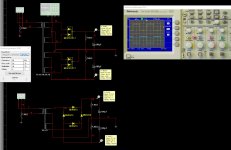jarrod0987
New member
I have been doing electronics on and off (mostly off  ) since about 90'. I have been studying SMPS for a while now. Reading the guides, watching the videos etc. Something has been bugging me. Many of these people are not native English speakers. They always seem to say that AC comes out of the secondary side and gets rectified through the Schoytkey Diodes and smoothed etc. Isn't it really pulsating DC? That is what gets fed into the transformer after all in this kind of Power Supply. I assumed that is why the diodes only go one direction coming out of the secondary side because the pulses only ever come from that direction anyways? However, that creates another question. Why have diodes at all then? Why not just capacitors? It must be AC after all? Confused...
) since about 90'. I have been studying SMPS for a while now. Reading the guides, watching the videos etc. Something has been bugging me. Many of these people are not native English speakers. They always seem to say that AC comes out of the secondary side and gets rectified through the Schoytkey Diodes and smoothed etc. Isn't it really pulsating DC? That is what gets fed into the transformer after all in this kind of Power Supply. I assumed that is why the diodes only go one direction coming out of the secondary side because the pulses only ever come from that direction anyways? However, that creates another question. Why have diodes at all then? Why not just capacitors? It must be AC after all? Confused...
Thanks
Thanks

